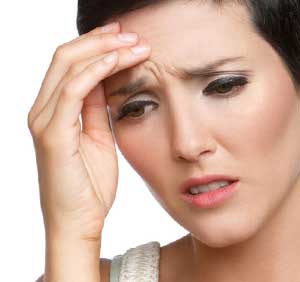Pain Management in Burbank, CA

Chronic pain is defined as discomfort that persists for three months or longer. It can be caused by a medical condition or an injury. If you suffer from chronic pain, you're not alone. Chronic pain affects 1.5 billion people worldwide, with 100 million of those people residing in the US.
The causes can be as vast as the treatments. Here are just a few types of chronic pain:
- Pain due to injuries sustained by an automobile accident
- Headaches
- Backaches caused by poor posture
- Arthritis pain
- Sinus pain
- Pain due to repetitive motion like carpal tunnel syndrome
- Fibromyalgia
Traditional Treatments of Chronic Pain

For years, chronic pain sufferers were restrained by a limited amount of treatments for their condition. Mild, but lingering pains were usually handled by analgesic pharmaceuticals such as acetaminophen and non-steroidal anti-inflammatory medication. More severe conditions could require the injection of anesthetics directly into the injured area. In extreme cases, surgery was the only answer.
In recent years, however, doctors have explored approaches to pain relief that called upon a proactive involvement with the patient.
- Physiotherapy, chiropractic, and other manipulation techniques are now used to correct misalignments in the musculoskeletal system, or strengthen the muscles around the injured area.
- Therapeutic massage can work to release years of pent up tension, and medical professionals can recommend exercises for the patient to perform at home or in the workplace.
- Alternative therapies such as acupuncture and acupressure stimulate trigger points to encourage the body's natural healing functions.
Other Treatments of Chronic Pain
In addition to physical manipulation, doctors have discovered advanced methods to combat chronic pain. Now more than ever, doctors have a greater understanding of the nervous system, the spinal cord, and how they interact with the brain. These studies have opened the door to a plethora of new pain management treatments.
Pain Medication
- Antidepressants have been found to control the chemical impulses of neurotransmitters. Neurotransmitters are responsible for sending information from an injured area to the brain, where it is interpreted as pain. Antidepressants can also increase serotonin and norepinephrine levels which are the neurotransmitters used to manage sleep, pain, and the immune system.
- Topical analgesics such as ointments, creams, lotions, or gels are absorbed directly into the skin and additionally work to reduce pain relaying chemicals.
- Botox injections can block nerve impulses to relieve certain types of pain.
Electrical
- Radiofrequency ablation is a technique wherein specific nerve endings are heated to decrease the pain signals they transmit.
- Transcutaneous electrical nerve stimulation, or TENS therapy, involves the introduction of low-level electrical impulses to temporarily relieve pain.
- Pain pacemakers work on a similar principal as traditional pacemakers, but instead of sending electrical impulses to the heart, they are sent directly to the spinal cord to stop pain messages from transmitting.
Psychological
Psychological treatment can go hand in hand with any number of therapies. In its simplest form, the patient works closely with a counselor to help them cope with the effects of living with constant pain.
With the advent of new technology, the psychological approach has become a tool unto itself in the fight against chronic pain.
Techniques such as biofeedback monitor the correlation between the mind and body. With hard data to support how the mind affects the body, the patient can learn how to retrain the bodily functions that lead to discomfort.
Vitality Integrative Medicine
Address
4849 Van Nuys BlvdSuite 104
Sherman Oaks, CA 91403
(424) 365-1800
www.vitalityintegrative.com
Hours
Mon:
8:00 am - 6:00 pm
Tue:
8:00 am - 6:00 pm
Wed:
8:00 am - 6:00 pm
Thu:
8:00 am - 6:00 pm
Fri:
8:00 am - 6:00 pm
Sat:
8:00 am - 12:00 pm

